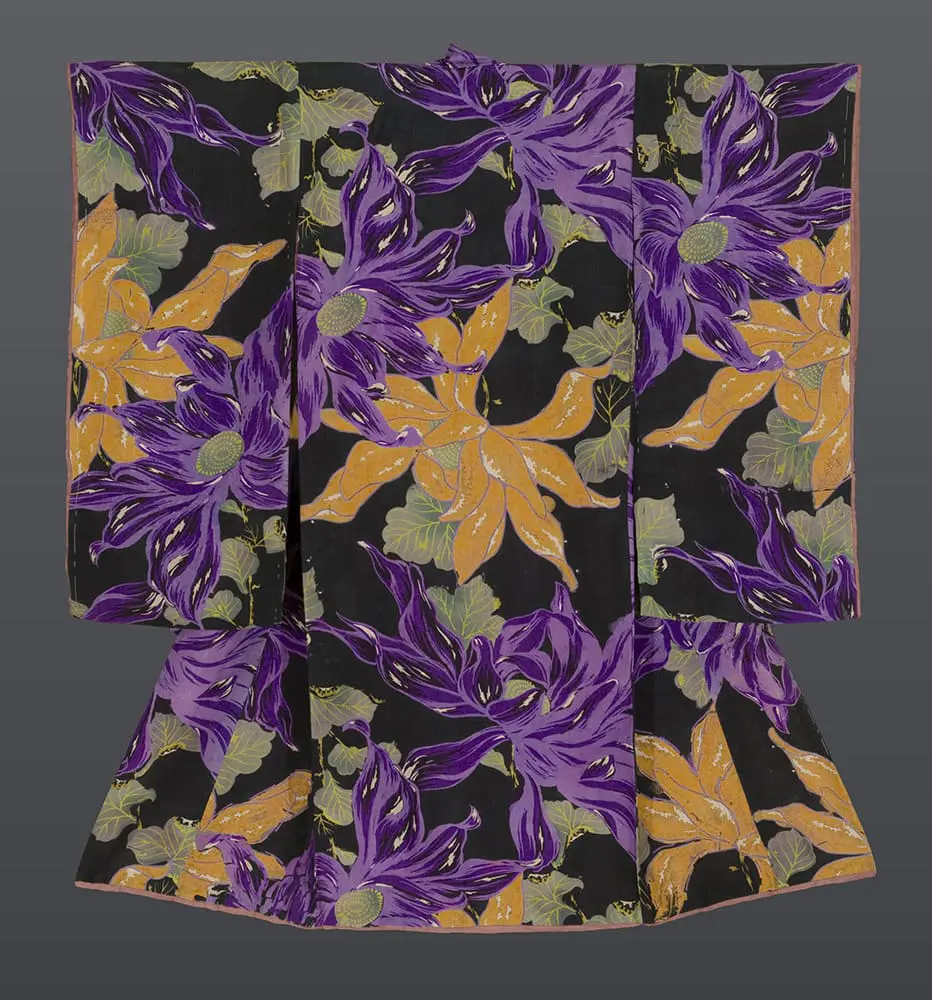This vibrant silk kimono represents a bold departure from traditional Japanese textile aesthetics, embracing the dramatic color sensibilities and graphic boldness that characterized early 20th-century modernist design. The garment features large-scale floral motifs rendered in striking complementary colors - rich purple and vibrant orange blossoms with sage green foliage - set against a deep black ground that intensifies the chromatic impact. This audacious color palette reflects the influence of Western Art Nouveau and early Art Deco movements, which celebrated nature motifs while pushing the boundaries of conventional color harmony through high-contrast, emotionally charged combinations.
The silkscreen printing technique employed here allows for the precise registration of multiple colors and the creation of bold, flat areas of saturated pigment that give the flowers an almost poster-like quality reminiscent of commercial graphic design of the period. The floral motifs themselves appear to be stylized chrysanthemums or dahlias, their petals rendered with flowing, organic lines that capture the essence of Art Nouveau's biomorphic vocabulary while maintaining enough naturalistic detail to preserve their botanical identity. The closeup image reveals the sophisticated layering of colors and the subtle gradations within each bloom, where lighter tones create dimensional modeling against the deeper base colors. As a girl's kimono, this garment would have represented the height of fashionable modernity for young women of the Taisho period, embodying the era's spirit of cultural experimentation and the embrace of bold, Western-influenced aesthetics that challenged traditional Japanese notions of restraint and subtle beauty in favor of dramatic visual impact and contemporary sophistication.
It has a tiny cut on the shoulder. Measuring 30 inches (76 cm) from sleeve-end to sleeve-end and standing at 33 inches (84 cm) in height.
The piece is featured on page 140 of the July-August 2017 edition of Arts of Asia.
.avif)











